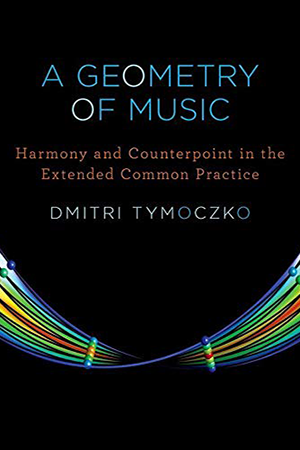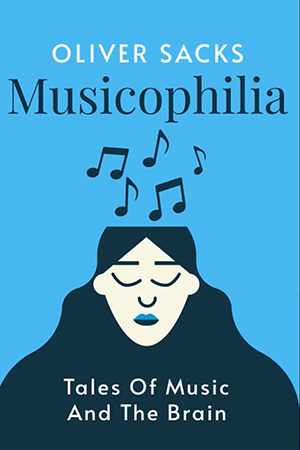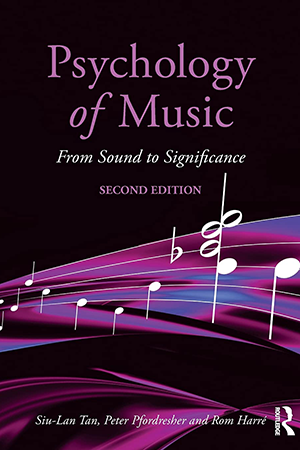
Library
Music
Dmitri Tymoczko
A Geometry of Music: Harmony and Counterpoint in the Extended Common Practice
How is the Beatles' "Help!" similar to Stravinsky's "Dance of the Adolescents?" And how do Chopin's works exploit the non-Euclidean geometry of musical chords? In this groundbreaking work, author Dmitri Tymoczko describes a new framework for thinking about music that emphasizes the commonalities among styles from medieval polyphony to contemporary rock. Tymoczko identifies five basic musical features that jointly contribute to the sense of tonality, and shows how these features recur throughout the history of Western music. In the process he sheds new light on an age-old question: what makes music sound good? A Geometry of Music provides an accessible introduction to Tymoczko's revolutionary geometrical approach to music theory. The book shows how to construct simple diagrams representing relationships among familiar chords and scales, giving readers the tools to translate between the musical and visual realms and revealing surprising degrees of structure in otherwise hard-to-understand pieces. Tymoczko uses this theoretical foundation to retell the history of Western music from the eleventh century to the present day. Arguing that traditional histories focus too narrowly on the "common practice" period from 1680-1850, he proposes instead that Western music comprises an extended common practice stretching from the late middle ages to the present. He discusses a host of familiar pieces by a wide range of composers, from Bach to the Beatles, Mozart to Miles Davis, and many in between. A Geometry of Music is accessible to a range of readers, from undergraduate music majors to scientists and mathematicians with an interest in music. Defining its terms along the way, it presupposes no special mathematical background and only a basic familiarity with Western music theory. The book also contains exercises designed to reinforce and extend readers' understanding, along with a series of appendices that explore the technical details of this exciting new theory.

Michael Diamond
Beastie Boys Book
#A panoramic experience that tells the story of Beastie Boys, a book as unique as the band itself—by band members ADROCK and Mike D, with contributions from Amy Poehler, Colson Whitehead, Wes Anderson, Luc Sante, and more. Formed as a New York City hardcore band in 1981, Beastie Boys struck an unlikely path to global hip hop superstardom. Here is their story, told for the first time in the words of the band. Adam “ADROCK” Horovitz and Michael “Mike D” Diamond offer revealing and very funny accounts of their transition from teenage punks to budding rappers; their early collaboration with Russell Simmons and Rick Rubin; the debut album that became the first hip hop record ever to hit #1, Licensed to Ill—and the album’s messy fallout as the band broke with Def Jam; their move to Los Angeles and rebirth with the genre-defying masterpiece Paul’s Boutique; their evolution as musicians and social activists over the course of the classic albums Check Your Head, Ill Communication, and Hello Nasty and the Tibetan Freedom Concert benefits conceived by the late Adam “MCA” Yauch; and more. For more than thirty years, this band has had an inescapable and indelible influence on popular culture. With a style as distinctive and eclectic as a Beastie Boys album, Beastie Boys Book upends the typical music memoir. Alongside the band narrative you will find rare photos, original illustrations, a cookbook by chef Roy Choi, a graphic novel, a map of Beastie Boys’ New York, mixtape playlists, pieces by guest contributors, and many more surprises.

Oliver Sacks
Musicophilia
What goes on in human beings when they make or listen to music? What is it about music, what gives it such peculiar power over us, power delectable and beneficent for the most part, but also capable of uncontrollable and sometimes destructive force? Music has no concepts, it lacks images; it has no power of representation, it has no relation to the world. And yet it is evident in all of us–we tap our feet, we keep time, hum, sing, conduct music, mirror the melodic contours and feelings of what we hear in our movements and expressions. In this book, Oliver Sacks explores the power music wields over us–a power that sometimes we control and at other times don’t. He explores, in his inimitable fashion, how it can provide access to otherwise unreachable emotional states, how it can revivify neurological avenues that have been frozen, evoke memories of earlier, lost events or states or bring those with neurological disorders back to a time when the world was much richer. This is a book that explores, like no other, the myriad dimensions of our experience of and with music.

Diana Deutsch
Psychology of Music
The Psychology of Music draws together the diverse and scattered literature on the psychology of music. It explores the way music is processed by the listener and the performer and considers several issues that are of importance both to perceptual psychology and to contemporary music, such as the way the sound of an instrument is identified regardless of its pitch or loudness, or the types of information that can be discarded in the synthetic replication of a sound without distorting perceived timbre. Comprised of 18 chapters, this book begins with a review of the classical psychoacoustical literature on tone perception, focusing on characteristics of particular relevance to music. The attributes of pitch, loudness, and timbre are examined, and a summary of research methods in psychoacoustics is presented. Subsequent chapters deal with timbre perception; the subjective effects of different sound fields; temporal aspects of music; abstract structures formed by pitch relationships in music; differents of musical ability; and the importance of abstract structural representation in understanding how music is performed. The final chapter evaluates the relationship between new music and psychology. This monograph should be a valuable resource for psychologists and musicians.
